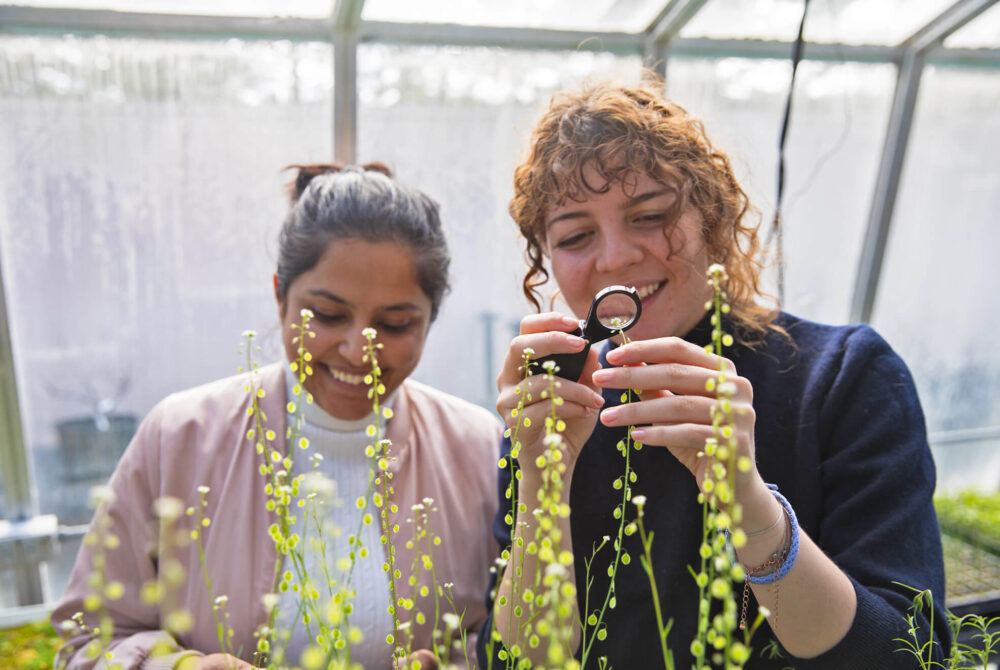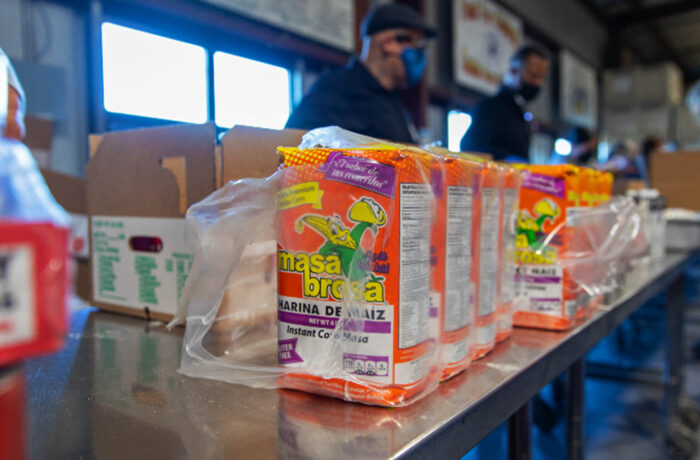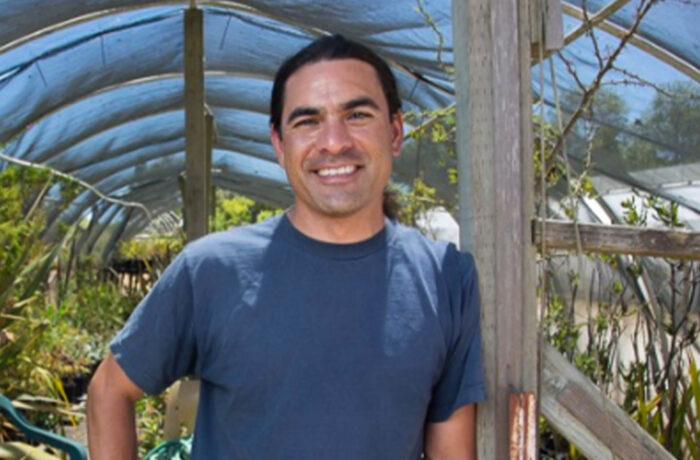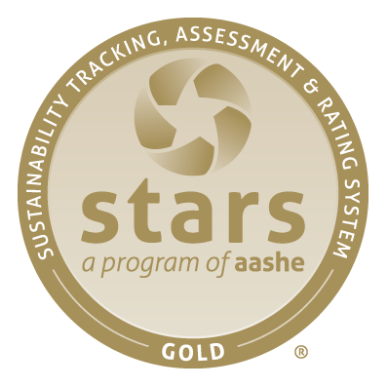In 2021, UC Santa Cruz was ranked the No. 3 green college in the nation by Princeton Review. This recognition reaffirms decades of dedication to environmental and social justice action. UCSC continued leading in these areas throughout the past year.
UC Santa Cruz was first in the nation for racial and gender diversity in leadership, according to a new report conducted by the Women’s Power Gap Initiative. Additionally, the Sustainability Office hired its first sustainability and equity special projects manager to advance diversity, equity and inclusion within the environmental movement.
Climate resilience work continued across campus through student-led outreach and UC Santa Cruz faculty leadership in a multicampus initiative on coastal resilience and climate adaptation. A Zero Waste Action Committee was launched and completed an outreach campaign, including the installation of multilingual waste signage. Dining Services returned to in-person operations, offering reusables in dining halls and Eco-Boxes for to-go meals for residential meal plan holders free of cost to students, saving thousands of pounds in waste annually.
Exciting and productive conversations between the chancellor, operational staff, faculty and the student-led Climate Coalition resulted in a commitment to launch a decarbonization and electrification planning process for UC Santa Cruz’s major greenhouse gas emissions. This plan will build upon UC Santa Cruz’s existing efforts to electrify — from the all-electric construction of Kresge’s 200,000-square-foot housing project to smaller but impactful actions like replacing gas lawn equipment with electric equipment.

CLIMATE PROTECTION – EMISSIONS
2021 data will be finalized after verification by a third party by early 2023.
Although refining of flight and commute data decreased figures from previous reports, 2021 showed an increase in both categories from the previous year as pandemic-related travel reductions abated.
ENERGY – RENEWABLE energy use
ENERGY USE INTENSITY (EUI)
UC Santa Cruz saw a decrease in its EUI in the calendar year 2021.
FOOD
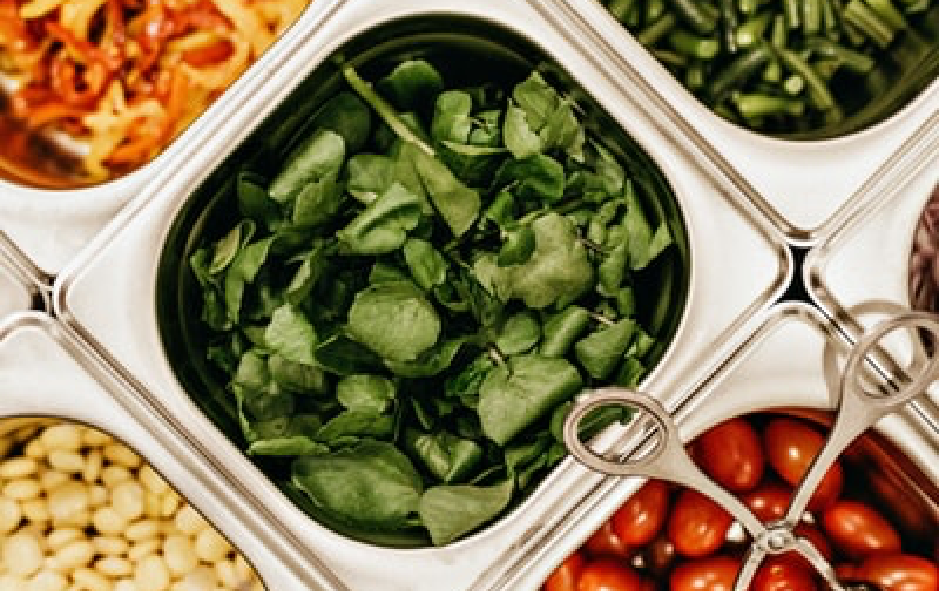
of food and beverage purchases met sustainability criteria ($2.3M)
of food and beverage purchases were plant-based ($1.1M)
Food data has improved in recent years due to better tracking and coding of sustainable spend and food recovery.
Green building
UCSC added two new LEED buildings this year: Environmental Health and Safety (Building Design and Construction, Silver) and Crown College Residential Hall (Commercial Interiors, Gold).
8 Gold, 7 Silver and 2 Certified
Total number of LEED certifications
procurement

green spend on electronics (56%)

green spend on cleaning supplies (90%)

green spend on indoor office furniture (82%)
The University resumed reporting on green spend, as defined in the Sustainable Procurement Guidelines, in fiscal year 2021–22 and reached out to suppliers for spend data in four product categories for this year’s report.
Green spend is defined as meeting preferred or minimum criteria in UC’s Sustainable Procurement Guidelines.
Suppliers reporting: Electronics (4), Furniture (2), Cleaning supplies (4), Office supplies (1).
UC Systemwide Spend Analytics category data provided by CalUSource.
Sustainable Building & Laboratory Operations
The Green Labs team certified three new labs and recertified three labs. The team redesigned the lab assessment and now utilizes a UCSC owned and operated spreadsheet. The team helped roll out the campus’s new recycling signage inside labs, sent out four newsletters, and incentivized the purchase of four new Energy Star freezers and fridges
total assessed green laboratories
Transportation

of students and employees are utilizing alternative commuting methods

EV charging ports

of light-duty vehicles acquired in 2021 were electric (zero-emission) or hybrid vehicles
This data was taken from the 2021 UC Fleet Sustainability Plan with recent year updates.
WATER
*Based on a 3-year average of fiscal years 2005-08.
Potable water usage increased significantly from last year as students and employees returned after COVID-19 curtailment measures. However, the campus is on track to meet the 2025 goal.
ZERO WASTE – GENERATion
*These numbers might include a small amount of incineration that is being phased out.
Per capita waste generation has decreased as UC Santa Cruz has adapted to pandemic-induced changes in operations, such as fully remote and hybrid employee schedules and a reduction or change in format of usual events.
ZERO WASTE – DIVERsion
Diversion rates have stayed relatively unchanged. This is due to increased single-use items, a transition where waste was generated on campus due to COVID-19, and improved and standardized waste signage for campus.
Awards
UC Santa Cruz maintains a Gold rating from the Association for the Advancement of Sustainability in Higher Education’s Sustainability Tracking, Assessment and Rating System (AASHE STARS). The report is valid until 2025. This rating system assesses the broad spectrum of sustainability initiatives and programs across campus, with sections covering academics, engagement, operations and public administration. A full list of awards is featured on the UC Office of the President’s website.
 Sustainability Annual Report 2022
Sustainability Annual Report 2022